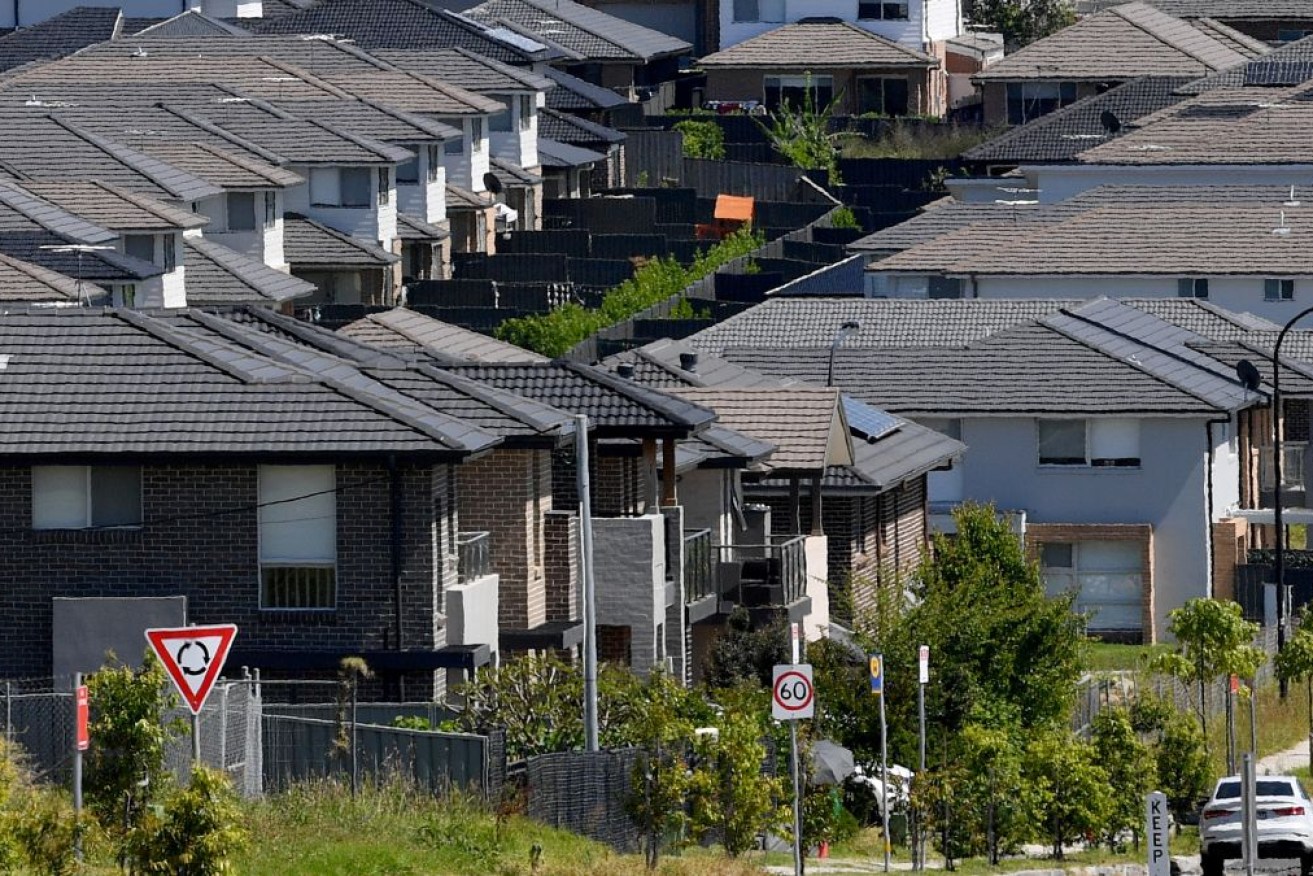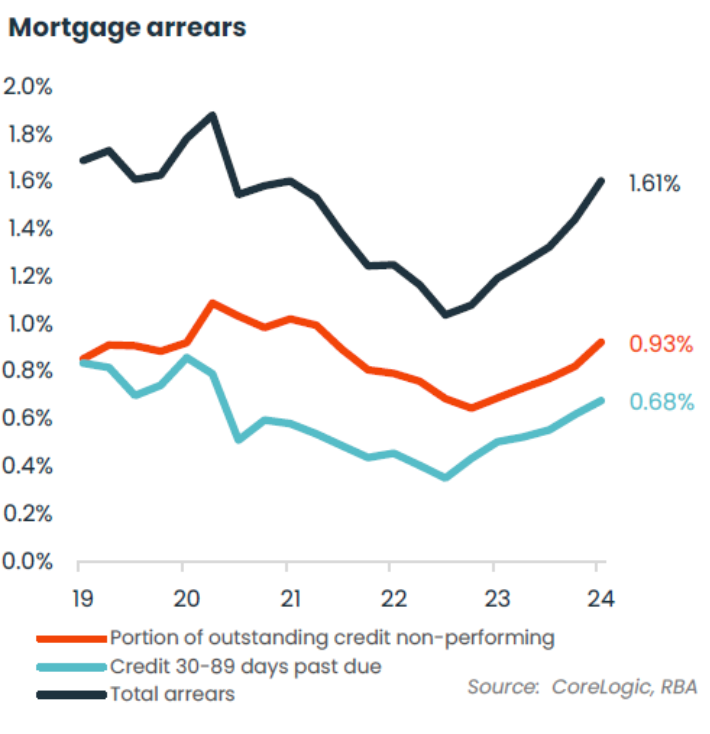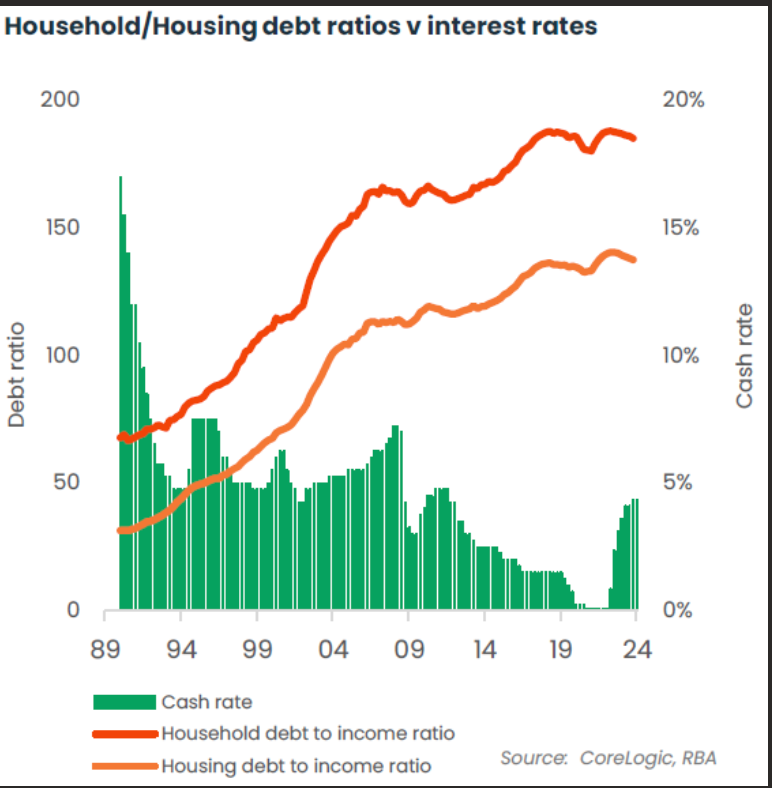Explained: How families are coping as mortgage arrears reach three-year high


More households are struggling to pay their mortgages, but most are weathering the storm.
The number of Australians falling behind on their mortgage repayments has hit the highest level in three years as families struggle with high interest rates.
But experts are optimistic that it won’t get much worse from here, with a relatively strong jobs market helping millions of households weather the storm by saving money where they can.
CoreLogic research director Tim Lawless said the rate of mortgage arrears has hit 1.6 per cent over the March quarter, the highest level since 2021 and above a low point of 1 per cent in 2022.
The culprit is a huge increase in the cost of debt, with average variable interest rates for owner-occupier home loans rising from 2.8 per cent in April 2022 to 6.39 per cent in March 2024.
That’s added almost $1600 to monthly repayments for those with $750,000 loans, Lawless said.
“Cost-of-living pressures are consuming a larger portion of household income, households are paying more tax than ever before and household savings are being drawn down, eroding the savings buffer accrued through the pandemic,” Lawless explained.
Buffers ‘obliterated’
The proportion of so-called “non-performing” home loans – where repayments are at least 90 days past due, or a lender doesn’t expect to collect – has risen to 0.93 per cent of mortgages.
Meanwhile, borrowers who are 30 to 89 days overdue in repayments now make up 0.68 per cent of loans, which is the highest since 2020 and almost double the low point seen in late 2022.
Financial adviser and Insufficient Funds author James Millard said rising rates of mortgage arrears suggest there’s a much larger portion of households feeling the squeeze right now.
“The rate rises have been so significant in the past two years that it has caught everyone by surprise,” he said.
“People dove into mortgages at a much lower [interest rate], and maybe they did factor in a buffer but that has been obliterated more than anyone expected two to three years ago.”
Weathering the storm
Despite that though, Millard says his company’s mortgage broking business, which covers home loans for hundreds of clients, has avoided overdue repayments as families act responsibly.
That includes putting more money away where possible and utilising mortgage offset facilities.
“Mortgage stress is rising, but it doesn’t look disastrous at this point,” Millard explained.
Lawless reached a similar conclusion, suggesting that while arrears are likely to worsen in coming months there shouldn’t be a sharp uptick in those falling behind on their home loans.
“Although mortgage arrears has risen above the series average, most borrowers are maintaining their repayments using savings, working more hours/multiple jobs, and contributing less to mortgage offsets or redrawn facilities,” he said.
“Arrears are unlikely to experience a material ‘blow out’ unless labour markets weaken substantially more than forecast.”
Jobs and narrow path
Millard said the trajectory for the jobs market will be paramount for the fortunes of home owners across the country because losing employment is the biggest risk factor for falling into arrears.
That has also been a big priority for the Reserve Bank, which is attempting to preserve employment gains seen after Covid-19, even if it means tolerating higher inflation for longer.
But RBA governor Michele Bullock has described the plan as a “narrow path” that is getting even thinner lately, with inflation proving stubborn in some areas and unemployment ticking upwards.
“If inflation continues to drop obviously that’s great for interest rates, but that’s generally when you see the unemployment rate rising,” Millard said.
“That might be the challenge at the end of the jobs market.”










